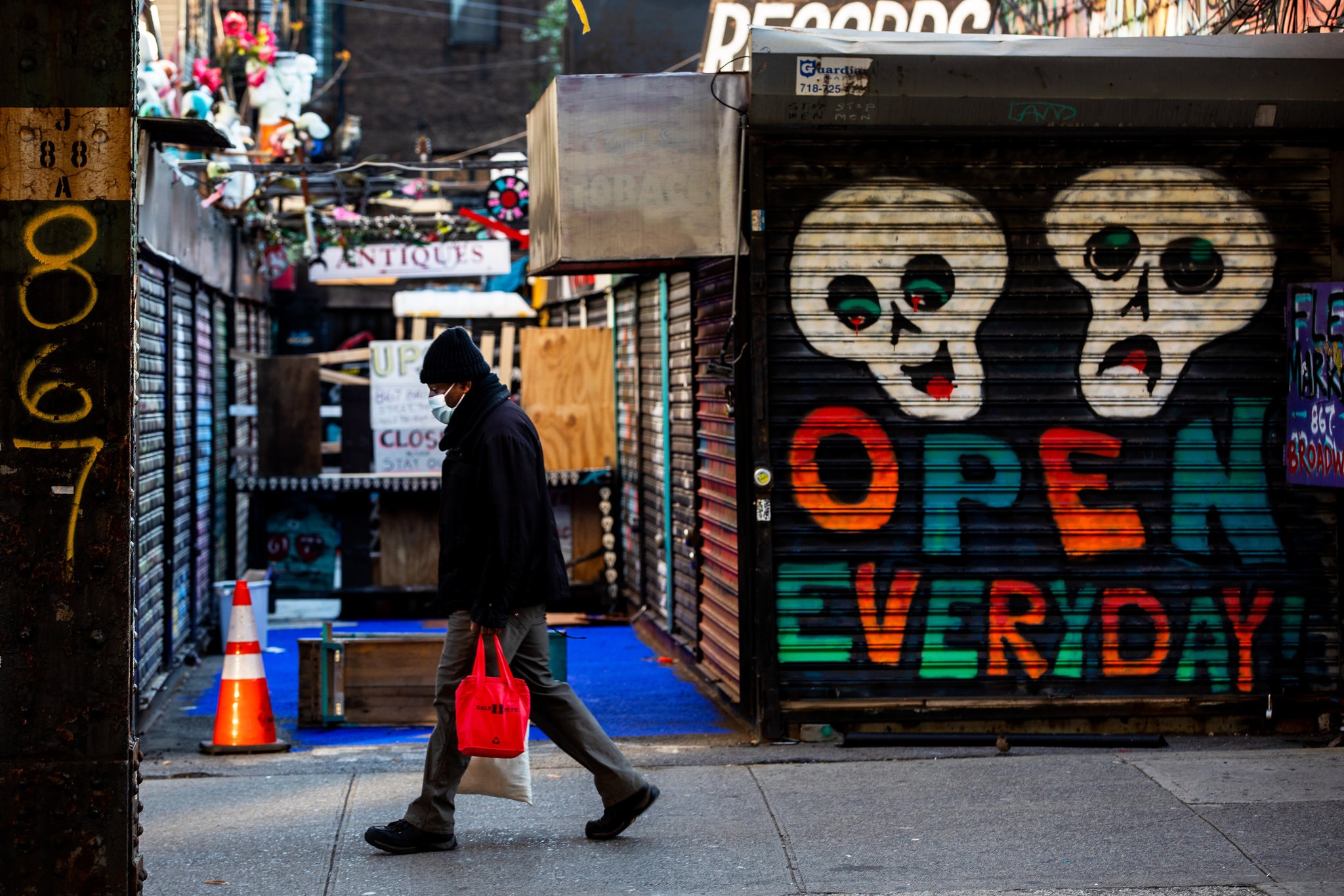Minorities are dying of Covid-19 at alarming rates. Here’s what to do about it right now.
Across the United States, black and Hispanic people suffer disproportionately from poverty, poor health care and chronic diseases like diabetes, hypertension and asthma.
Now the data, when it is available, shows that black and Hispanic Americans are dying of the coronavirus disease at rates far higher than white Americans.
In New York City, Hispanic people are dying at the highest rate. Nearly 34 percent of the deaths in New York City are of Hispanic residents, who make up 29 percent of the population. Black New Yorkers, who represent about 22 percent of the city’s population, make up about 28 percent of the deaths.
Even so, New York’s racial disparities appear to be less severe than those in some other cities and states. (New York’s comparatively robust public health system and safety net may help explain why, but far more research on the matter is called for.) In Chicago, more than 70 percent of the deaths related to the coronavirus were among black residents, though black residents make up only a third of the city’s population. In Michigan, black residents make up just 14 percent of the population, but over 40 percent of the Covid-19 deaths.
As the pandemic continues, it is crucial that local and state health departments across the country report data on how the coronavirus is affecting people by race and also by gender and age. In Boston, for instance, doctors and community leaders are raising the alarm about high rates of infection in Latino neighborhoods, yet the official figures don’t reflect that concern. Given the dearth of testing so far, robust data collection should include not just recording the deaths of those who have tested positive for coronavirus, but also those suspected of suffering from it.
The racial disparities may be predictable, but they are tragic nonetheless. Public health experts say there are actions that states and cities can take right now to help save lives. Doing so would help protect all vulnerable people.
The country’s response to the pandemic remains hampered by medical supply shortages. As masks, gloves and other protective equipment become more available, it is clear that all essential workers require them, not just emergency and medical personnel. That includes janitors, home health aides, delivery people, grocery and farm workers and sanitation workers. In New York, where the Metropolitan Transportation Authority has been accused of failing to protect workers early on, the work force has high rates of illness and death. In New York City, as in many cities, much of the municipal work force is black or Hispanic.
Another prescription is to speed access to medical care for Hispanic and black Americans, who are less likely to have primary care physicians. In New York, people are dying every day in minority neighborhoods of coronavirus-like symptoms at home, in the arms of family members and paramedics. Or they are waiting in line for hours outside the emergency rooms of the city’s overwhelmed public hospitals, only to give up and return home without care. Or they try for days to get connected to a doctor through the city’s swamped 311 nonemergency line but don’t receive the help they need.
These disparities in access and outcomes call out for more fundamental changes in health care policy in the United States. But for now, states and cities should do everything possible to quickly remove the barriers to care for all disadvantaged populations.
“Let’s not pretend there’s nothing we can do,” said Dr. Mary Bassett, New York City’s former health commissioner and now director of the FXB Center for Health and Human Rights at Harvard University. .
New York finally began some of this work by setting up pop-up coronavirus testing centers in recent days in minority neighborhoods in Queens, Brooklyn and the Bronx. But more can be done.
In many black and Hispanic communities, trust in government is low and the information given to the residents has often been confusing and come too late. To serve these Americans now, state and local governments will have to meet those in need where they are. That could mean directing more medical workers to reach out to vulnerable people, a serious challenge that calls for turning to trusted nonprofits, churches and advocacy groups and unions to help identify those in need.
Interstate cooperation would help, too. California and Oregon have sent ventilators and other needed medical equipment to New York and other hard-hit states. Expanding telemedicine services for at-risk populations is another useful strategy.
And everything possible needs to be done to tear down the wall between private and public medical care. In New York, Gov. Andrew Cuomo and Mayor Bill de Blasio, for example, should ensure that private hospitals and medical groups like CityMD make their substantial resources truly available for any patient who needs them, not just any patient who can pay. Though New York City’s public hospitals serve a majority of low-income people and those without health insurance, they are overwhelmed and cannot meet the need on their own. The private hospitals must step up wherever they can to assume more of the burden.
Another way to save lives is to provide alternative housing for workers and others who live in large households and have no way to isolate themselves if they get sick. In the Elmhurst area of Queens, for instance, many immigrant workers live in crowded boardinghouses where the virus is spreading rapidly. Families in New York City and other areas of the country where the cost of housing is high are already doubled or tripled up in small apartments, with several generations in one household. People in these usually vibrant neighborhoods are getting sick and bringing home the virus to their parents and grandparents.

New York has already turned to empty hotel rooms and college dormitories to house some residents and patients during the crisis. It can expand the effort to allow more residents living in poverty to recover from Covid-19 away from their families, helping slow the spread of the disease. It has already begun similar efforts in Queens, where the Billie Jean King National Tennis Center has been transformed into a hospital where New Yorkers on the mend can safely complete their recovery without exposing family members and neighbors to the virus.
The economic toll of the virus in these already vulnerable communities is devastating, and it demands an urgent response from federal, state and local governments.
Community organizers in heavily immigrant neighborhoods in Queens are scrambling to find the funds to help hundreds of families pay the burial costs in their adopted country. Manuel Castro, the executive director of New Immigrant Community Empowerment, an advocacy group that works primarily with laborers, said he was overwhelmed by requests for food from undocumented New Yorkers who are sick, out of work, or both, and have nowhere else to turn.
Mr. Castro said he planned to pull names out of a hat to decide which families would get one of the 100 boxes of groceries the group had on hand, though hundreds of other families are in need. “How do you do that?” said Mr. Castro, who himself is recovering from symptoms of Covid-19. “They’re asking for food. They’re asking for jobs. And we don’t have much to give.”
Getting state and local aid to nonprofits can help. So can cash assistance to individuals from state and local governments, possibly in the form of debit cards for those lacking bank accounts.
But given the scale of the need, this may be a job for the National Guard. The National Guard was dispatched last month to distribute food and other services in the New York suburb of New Rochelle, one of the first places in the country to suffer the epidemic. It may be time for similar action in poor neighborhoods across New York City where the death rates from Covid-19 are high.
Similar efforts can be undertaken in rural communities, especially those connected with farm work and the meatpacking industry, where low-wage workers are at high risk.
The coronavirus has brought misery to the doorsteps of millions of Americans of all backgrounds. But in hard-hit cities like New York, New Orleans and Detroit, the virus is sweeping through generations of black and Hispanic families, bringing waves of grief, and pushing those already living on the edge of economic hardship into the abyss.




